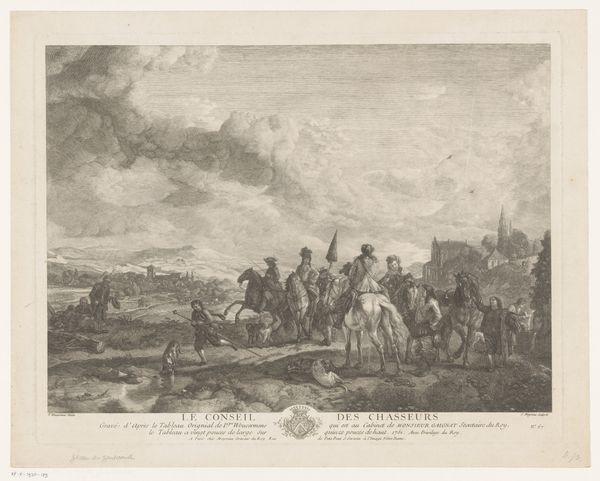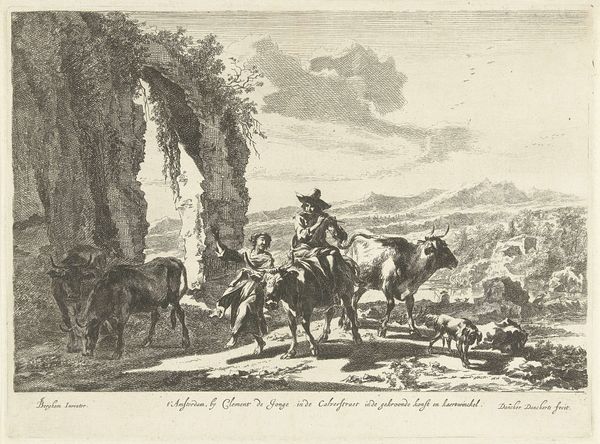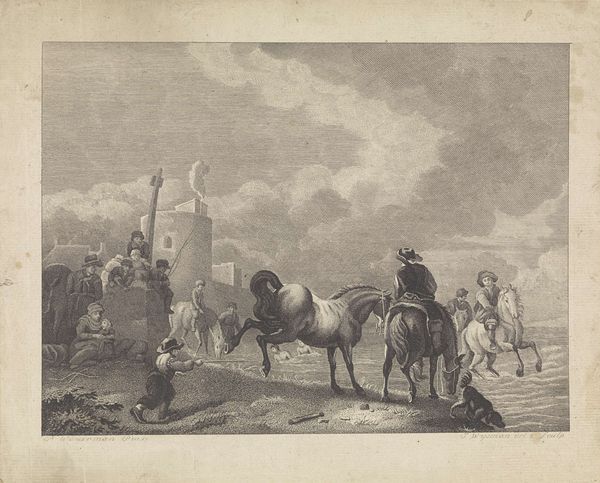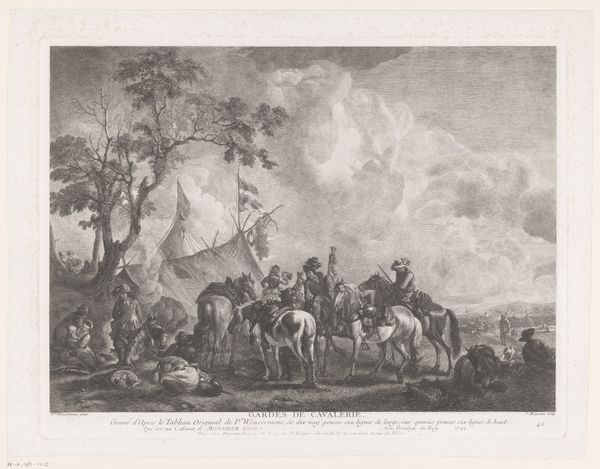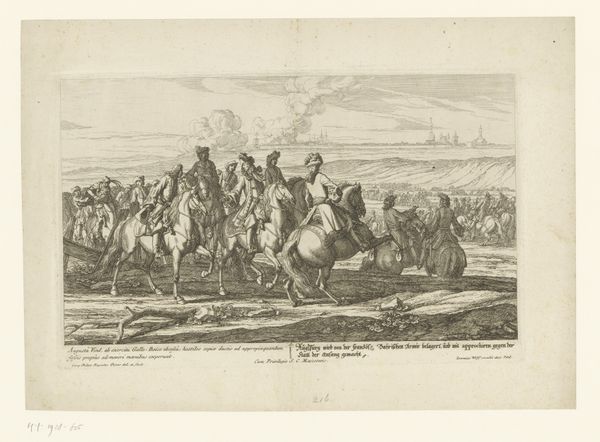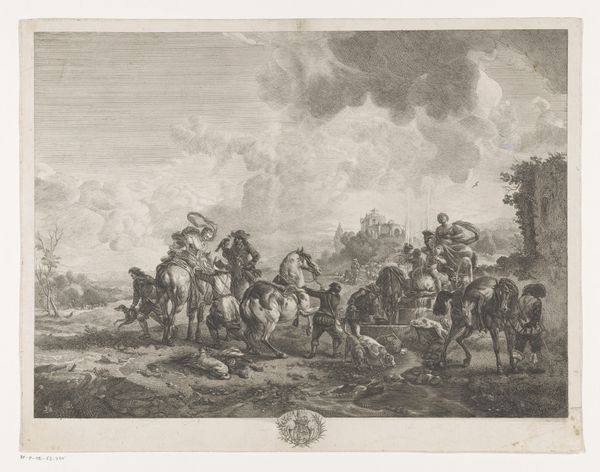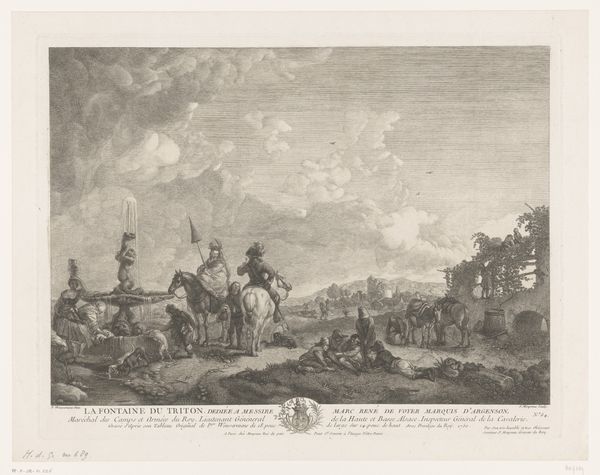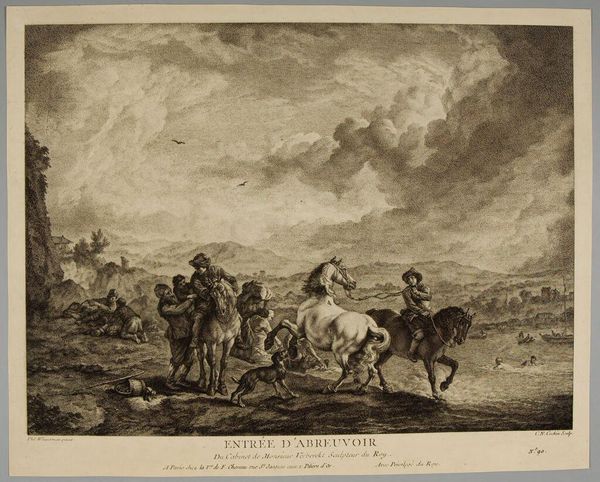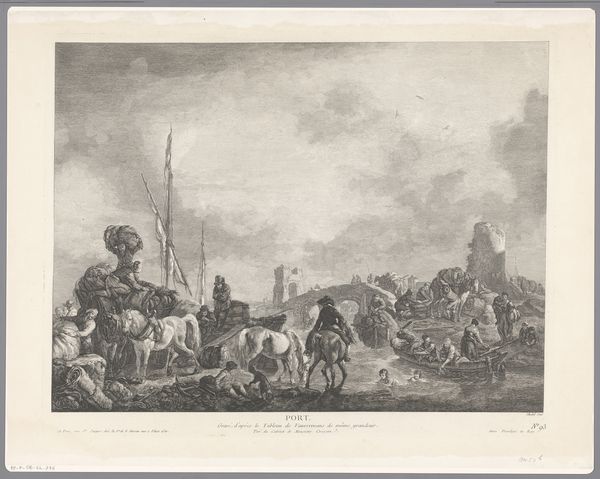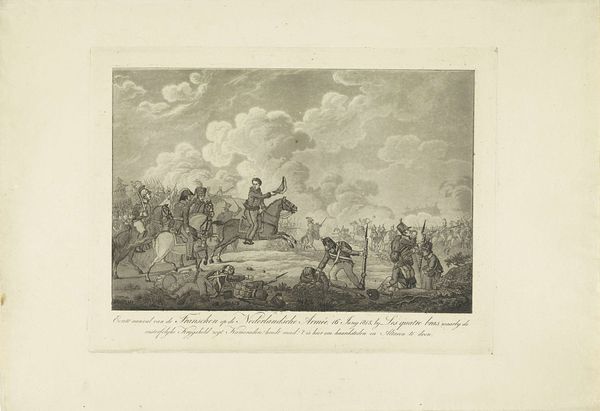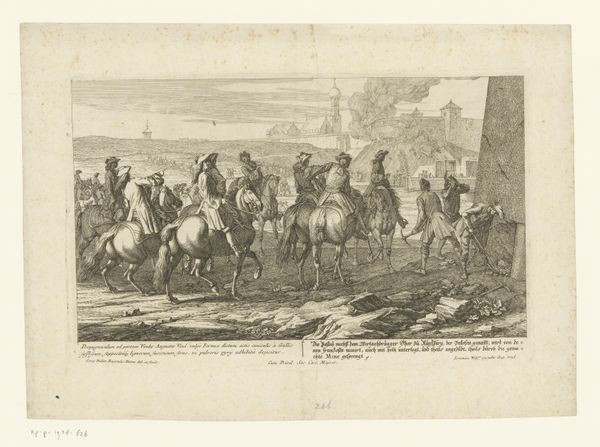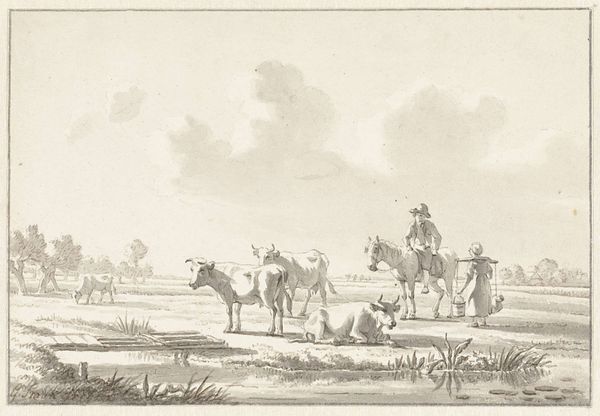
Dimensions: height 278 mm, width 356 mm
Copyright: Rijks Museum: Open Domain
Editor: We're looking at "Landscape with Five Cows by a River," an etching by Henricus Josephus Antonissen from 1767. The etching is quite detailed and creates a sense of peaceful rural life, despite what appear to be storm clouds gathering overhead. What do you see in this piece? Curator: I see more than just a pastoral scene; I see a reflection of power dynamics embedded in the 18th-century Dutch landscape. Antonissen’s idealized view masks the socio-economic realities of the time. Consider, who benefits from this idealized representation of agricultural life? And whose labor makes it possible? Editor: That's an interesting perspective. I hadn't thought about it beyond face value. What clues within the etching suggest those hidden power structures? Curator: Look at the positioning of the cows, their apparent health, and their centrality to the composition. These cows are symbols of wealth and agricultural productivity, yet the labor of the people connected to them are completely missing. This absence reveals a societal tendency to valorize property while rendering invisible those who toil. And note the looming storm; it could represent the impending social upheavals threatening the existing order. Do you agree? Editor: Yes, I do see your point about the labor being hidden. So you’re suggesting that idyllic landscape art like this functioned, in part, to legitimize the existing social hierarchy? Curator: Precisely! The visual representation of a harmonious agrarian existence reinforces dominant ideologies by suppressing alternative narratives. Further, art was available mostly to upper classes perpetuating a positive image of ownership. It served as a powerful tool in maintaining social control, and therefore it demands questioning from a contemporary point of view. Editor: Wow, I'll never look at a pastoral landscape the same way again! Thanks for sharing your insight and widening my understanding. Curator: And thank you for being open to these connections. The past speaks to the present when we ask the right questions.
Comments
No comments
Be the first to comment and join the conversation on the ultimate creative platform.
